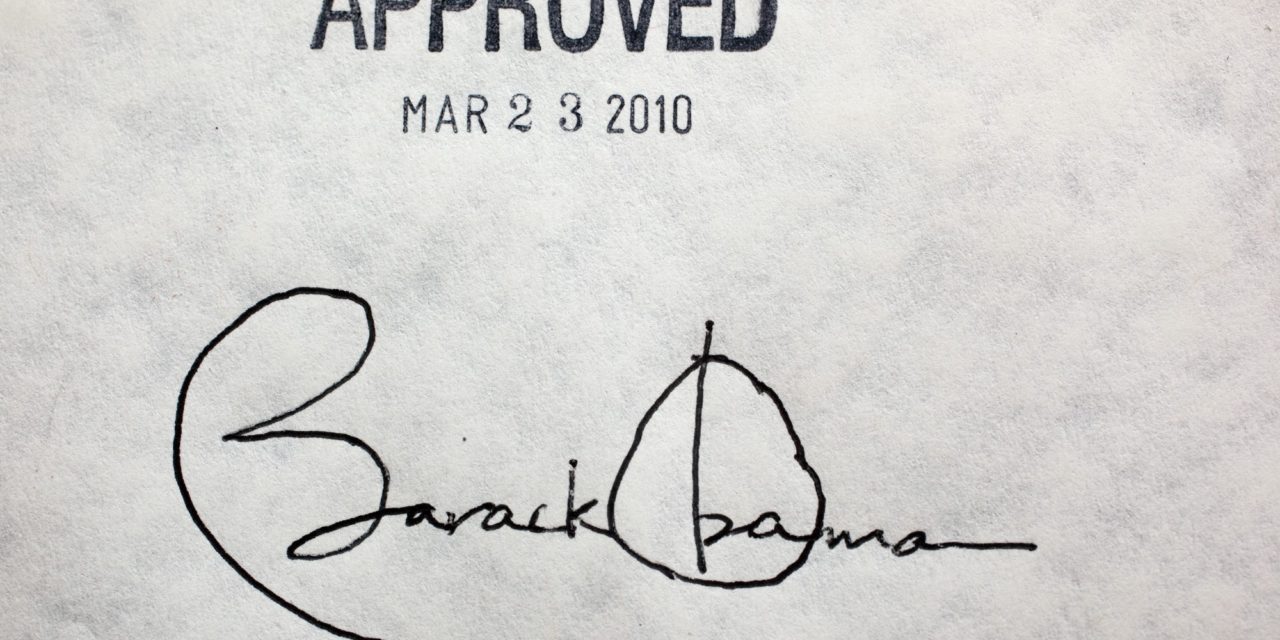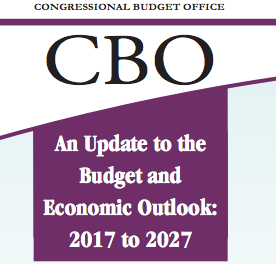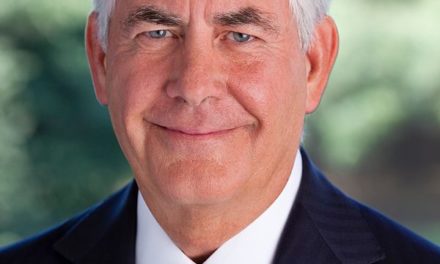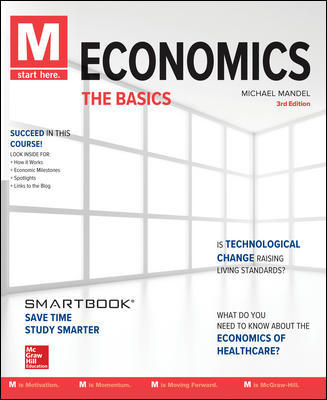April 2017:
President Obama signed the Affordable Care Act (ACA)–otherwise known as Obamacare–into law in March 2010. The Republican party was strongly opposed to Obamacare, and made overturning the law one of its top priorities, saying that it represented too much government interference in the economy.
However, something strange happened. The election of November 2016 gave Republicans control of Congress and the White House, so they had the power, in theory, to enact any legislation that they wanted, including a total repeal of Obamacare. However, after two months of wrangling, the Republican members of the House could not muster sufficient votes to pass their replacement for Obamacare, the American Health Care Act. “Obamacare is the law of the land,” said House Speaker Paul Ryan.”We’re going to be living with Obamacare for the foreseeable future.”
We will not get into the details of the political battle here. What’s important, though, is that economics gives us some insights into why repealing Obamacare in favor of a more free market system was so tough to do. First, let’s distinguish between three different ‘buckets’ for health care spending. First, most young and middle-aged Americans incur relatively predictable healthcare expenses such as dental care, eye glasses or contacts, the odd trip to the doctor for a broken finger or the flu. Routine maternity expenses, while large, are mostly predictable (about 80% of men and 85% of women have at least one biological child by their mid 40s). Second, a smaller number of young and middle-aged people are hit by big health problems such as cancer or heart disease that require very expensive treatments. Third, older people inevitably suffer more and more physical problems that are costly to treat, such as knees and hips that require replacement, or strokes (over the course of their lifetime, roughly 42% of men and 38% of women will develop cancer).
In theory, we could treat the market for health care goods and services like any other market, and let individuals fare for themselves. Then Americans would pay for routine healthcare out of their pocket, and buy catastrophic health insurance to protect against unexpected big expenses, just like they buy auto insurance now. So, in a free market for healthcare, individuals would cover routine expenses such as pregnancies themselves.
There are several problems, though, with this free market approach to healthcare. First, poor people would have a hard time paying for the same level of routine care and catastrophic insurance as richer people. This can be called the health care poverty problem. It especially bears on the health of infants.
Second, people who find out that they are sick are more likely to buy catastrophic insurance. This is what’s known as the adverse selection problem. Insurance companies would know that sick people are more likely to buy catastrophic insurance, so they would raise the premiums. Third, as people age, their probability of getting sick goes up, so the price of catastrophic insurance for old people would skyrocket. Americans would have to save big chunks of their pay in order to afford healthcare in their declining years.
Now, back to the political debate over whether to repeal the ACA. Obamacare made an attempt to address the health care poverty problem by offering subsidies to poor households so they can afford health insurance, or enrolling them in an expanded Medicaid program. At the same time, Obamacare’s “individual mandate” strongly encourages healthy young and middle-aged people to buy health insurance. That addresses the adverse selection problem, and keeps down the premiums for the catastrophic portion of health insurance. Finally, Medicare covers most older Americans.
Many Republicans wanted to repeal the ACA and introduce more free market elements into the health care system, but the health care poverty problem and the adverse selection problem would still remain. With federal subsidies cut, many Americans would find themselves unable to afford routine care. At the same time, without the individual mandate to avoid adverse selection, premiums would skyrocket for catastrophic care. As a result, the Congressional Office predicted 24 million Americans would go without health insurance. That turned out to be politically unacceptable.
Note: This textbook-based blog is explicitly non-political. We analyze current events for the beginning economics students without imposing our own views on the topic.
Key Terms
Catastrophic Health Insurance
Insurance that covers the very high expenses incurred by a serious illness or accident but does not cover ordi-nary health expenses.
Health Care Poverty Problem
The problem that poor people often do not have enough income to pay for health insurance.
Adverse Selection
The tendency of insurance—health insurance in particular— to be purchased by those who are more likely to make claims.
Review Questions
Additional Readings
Alice Rivlin, “Why is it so hard for Republicans to replace Obamacare?” February 9, 2017, Brookings Institution.
James C. Capretta, “The GOP should regroup and approach Democrats on health care,” March 31, 2017, American Enterprise Institute.





